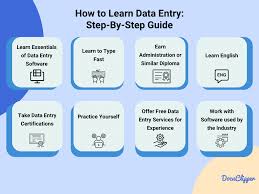Growing your own vegetables is a rewarding and fulfilling hobby that not only provides you with fresh, nutritious produce but also connects you with nature. As we move into 2024, there’s never been a better time to start your own vegetable garden. Whether you have a large backyard or just a small balcony, this beginner’s guide will help you get started with growing your own vegetables.
Why Grow Your Own Vegetables?
Benefits
- Freshness and Flavor: Homegrown vegetables often taste better and are more nutritious than store-bought options.
- Cost Savings: Growing your own vegetables can save you money on groceries.
- Environmental Impact: Reduces the carbon footprint associated with transporting produce.
- Educational Experience: Learning about plant growth and gardening can be a fun and educational activity for all ages.
Getting Started: Essential Steps for Beginners

1. Planning Your Garden
Assess Your Space
- Location: Choose a spot that gets at least 6-8 hours of sunlight daily. If you have limited space, consider container gardening.
- Soil: Check the quality of your soil. It should be well-draining and rich in organic matter.
Choose Your Vegetables
- Climate: Select vegetables suited to your climate and growing season. For example, tomatoes and peppers thrive in warm climates, while carrots and lettuce do well in cooler areas.
- Space Requirements: Consider the space each vegetable needs. Some plants, like squash and cucumbers, require more room than others.
2. Preparing the Soil
Soil Preparation
- Testing: Test your soil for pH and nutrient levels. Kits are available at garden centers.
- Amending: Add organic matter like compost or aged manure to improve soil fertility and structure.
Tilling
- Loosening Soil: Use a garden fork or tiller to loosen the soil to a depth of about 12 inches. This helps roots grow deeper and improves drainage.
3. Planting Your Vegetables
Seed Starting
- Indoors: Start seeds indoors if your growing season is short. Use seed trays and a seed-starting mix. Provide adequate light with grow lights if necessary.
- Outdoors: Directly sow seeds in the garden after the last frost date, following the instructions on the seed packets for depth and spacing.
Transplanting
- Hardening Off: Gradually acclimate indoor seedlings to outdoor conditions by placing them outside for a few hours each day before planting them in the garden.
- Spacing: Ensure proper spacing between plants to allow for growth and air circulation.
4. Watering and Fertilizing
Watering
- Consistency: Water regularly to keep the soil consistently moist but not waterlogged. Early morning is the best time to water to minimize evaporation and fungal issues.
- Techniques: Use a soaker hose or drip irrigation system to deliver water directly to the roots.
Fertilizing
- Types: Use organic fertilizers like compost or fish emulsion. Follow the recommended application rates for each type of vegetable.
- Timing: Fertilize at planting time and again during the growing season as needed.
5. Pest and Disease Management
Common Pests
- Insects: Watch for pests like aphids, tomato hornworms, and cucumber beetles. Use organic pest control methods like neem oil or insecticidal soap.
- Diseases: Monitor for signs of diseases such as powdery mildew or blight. Ensure good air circulation and avoid overhead watering to reduce disease risks.
6. Harvesting Your Vegetables
Timing
- Maturity: Harvest vegetables at their peak ripeness for the best flavor and nutritional value. Refer to seed packets or plant labels for specific harvesting times.
- Techniques: Use clean, sharp tools to cut vegetables from the plant to avoid damage.
7. Preserving Your Harvest
Storage
- Short-Term: Store fresh vegetables in the refrigerator or a cool, dark place.
- Long-Term: Consider freezing, canning, or drying excess produce to enjoy throughout the year.
Tips for Success
- Start Small: Begin with a few easy-to-grow vegetables to build your confidence before expanding your garden.
- Keep a Journal: Track your planting dates, harvest times, and any issues you encounter. This will help you improve your gardening skills over time.
- Join a Community: Connect with local gardening clubs or online forums for advice, support, and inspiration.
Conclusion
Growing your own vegetables in 2024 is a gratifying endeavor that offers numerous benefits. By following this beginner’s guide, you’ll be well on your way to cultivating a successful and productive vegetable garden. From planning and planting to harvesting and preserving, each step is an opportunity to learn and enjoy the fruits of your labor. Embrace the journey of gardening, and soon you’ll be reaping the rewards of your homegrown produce.



